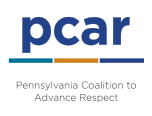Section 4: Physical Disabilities
Area 1: Disability Visibility and Accessibility Basics
Area 2: Services & Collaboration with People with Physical Disabilities
Summary
This section focuses on the experiences and needs of people with physical disabilities, with a particular focus on mobility disabilities and visible physical disabilities. After exploring how organizations can create accessible and inclusive spaces and the politics of visible disabilities, this section focuses on serving survivors with physical disabilities.
Area 1: Disability Visibility and Accessibility Basics
Changing The Way We Talk About Disability: 14 minute video by Amy Oulton, TEDxBrighton. Description: Amy addresses societal perceptions of disability and her vision for how we all change the way we approach disability. Amy has been a wheelchair user for the past ten years; she has Ehlers-Danlos syndrome, a genetic condition that causes weak tissues, joint dislocation, chronic pain and fatigue. In spite of this, Amy lives an exciting and hugely positive life, travelling the world, working as a graphic designer for a charity and campaigning to change the way society understands disability.
ADA Checklist for Existing Facilities: 89 page PDF by the Institute for Human Centered Design. Description: The Americans with Disabilities Act (ADA) requires state and local governments, businesses and non-profit organizations to provide goods, services and programs to people with disabilities on an equal basis with the rest of the public. Some people think that only new construction and alterations need to be accessible and that older facilities are “grandfathered,” but that’s not true. Because the ADA is a civil rights law and not a building code, older facilities are often required to be accessible to ensure that people with disabilities have an equal opportunity to participate. The ADA has different requirements for state and local governments and for places of public accommodation (businesses and non-profit organizations that serve the public).
Universal Design is Architecture for All: 621 word essay by Jackie Craven. Description: This article explains the concept of universal design and lists some guidelines for designing places and spaces for several disabilities including physical disabilities.
Moving Toward the Ugly: A Politic Beyond Desirability: 3,900 word essay by Mia Mingus, Leaving Evidence. Description: A speech and essay that breaks down the ways in which lookism, beauty culture, and fatphobia are rooted in white supremacy, ableism, (cis)sexism, and other forms of systemic harm. Mia then explains how embracing the aesthetic that is rejected by white supremacist, ableist, cissexist histories and cultures can be embraced and reclaimed by oppressed communities. While this incredible work does explore how people with disabilities are often portrayed and viewed as “monstrosities” and this is used to dehumanize people with disabilities, it delves more deeply into how aesthetic oppression can be an example of how identities and experiences are often “othered” into a category of “subhuman”.
Area 2: Services & Collaboration with People with Physical Disabilities
Considerations for Survivors with Mobility or Physical Disabilities: 1 page PDF by ValourUS. Description: This resource, a PDF document, is a simple list of dos and don’ts. It briefly offers practical guides on interacting with those who have physical disabilities.
6 Barriers to Counseling for People with Mobility Impairments: 675 word essay by Sarah Clark, LMFT, LMHC, CVRT. Description: Sarah Clark describes barriers to counseling in those with mobility disabilities and how to mitigate them when possible. The 6 barriers are accessibility, lack of awareness, disregard for culture or perspectives, intrusive touch, transportation, unwillingness to make accommodations or provide services.
Serving Survivors Who Have Service Animals: 1 hour, 30 minutes webinar by End Abuse of People with Disabilities. Description: Service animals are vital to some survivors with disabilities. They can provide independence and mobility and truly act as partners to their handlers. However, domestic violence shelters and other residential programs might struggle with how to: 1) interact with service animals; and 2) balance the presence of service animals with needs of other survivors. This webinar will review some of the complexities and provide guidance on how best to balance the needs of service users when a survivor has a service animal.
Domestic Violence Shelters and the ADA: 11,300 word whitepaper by Marc Dubin, Esq. Description: A paper that provides important questions for service providers regarding shelter accessibility, guidance to ensure shelters are accessible, and example scenarios to make the guidance concrete and clear.
